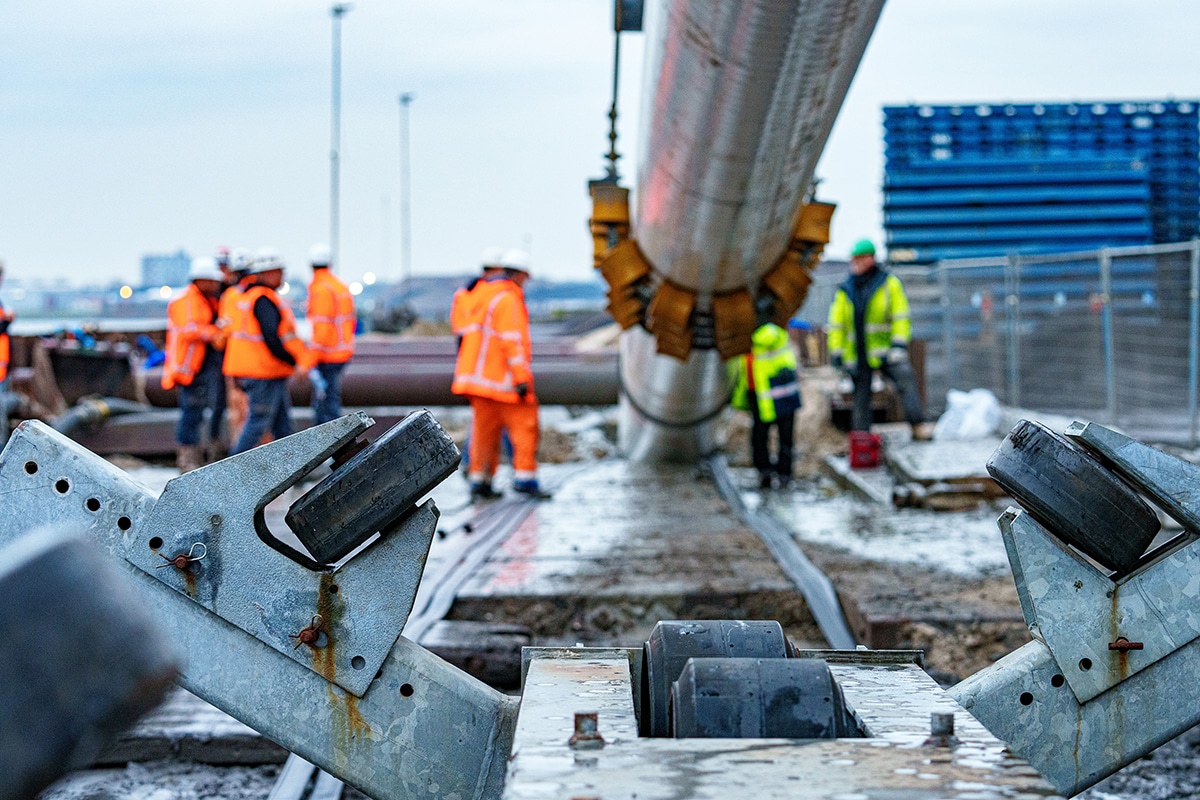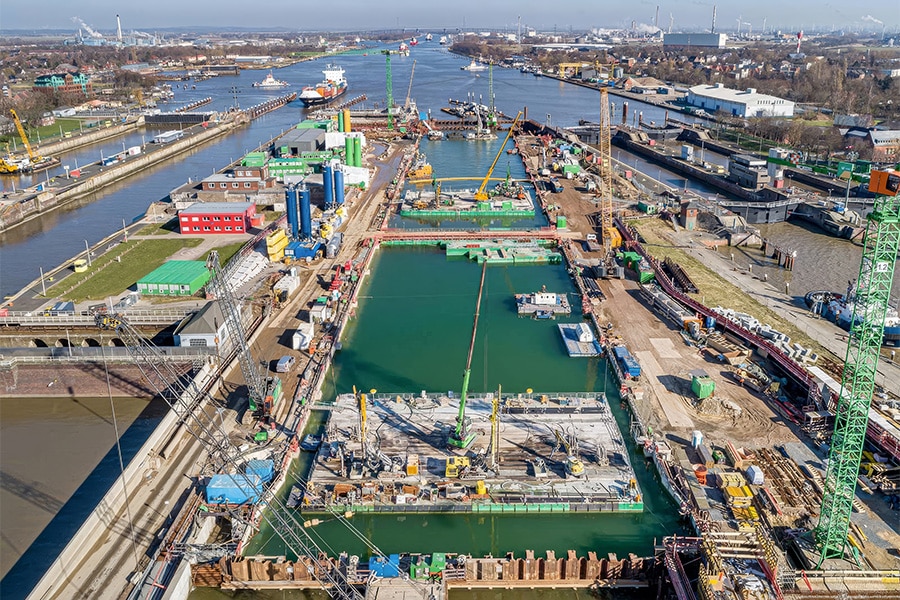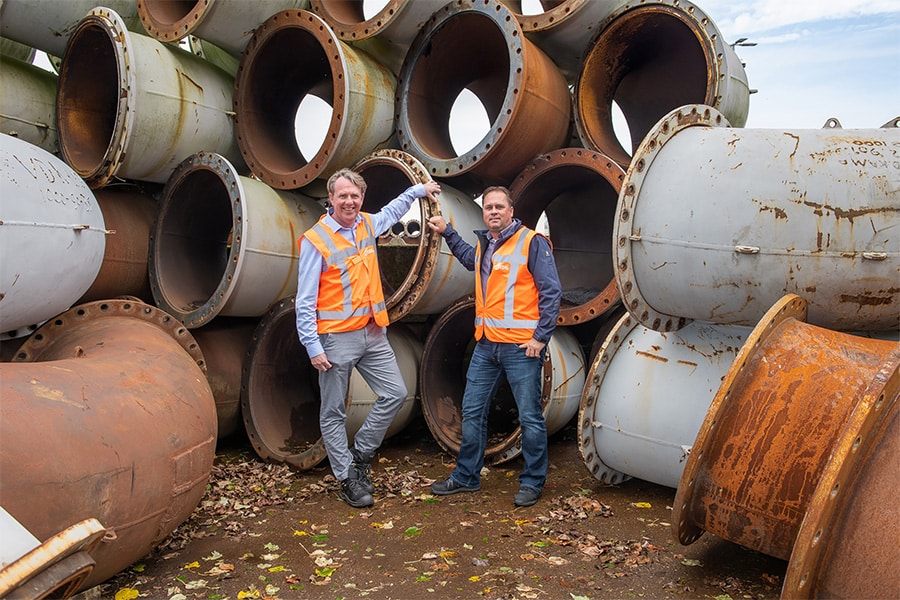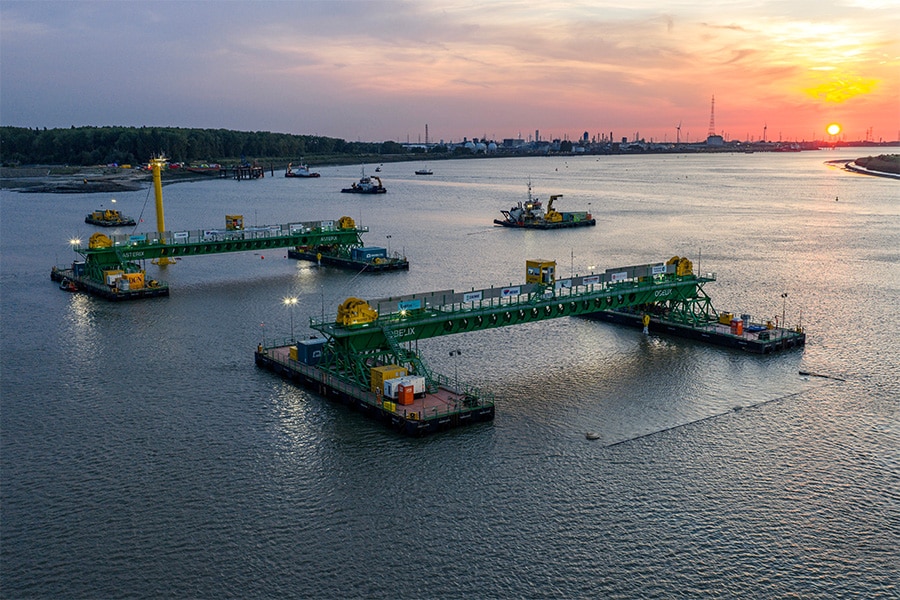
High-tech under the Scheldt
Anyone sinking a tunnel these days no longer does so on the feel of the tugboat captain and the eyes of the surveyor. Sinking the eight tunnel elements of the Scheldt Tunnel - part of the Oosterweel connection near Antwerp - is top sport. In Immontec's command unit, the operation is monitored on 16 screens. “It is high-tech work, where nothing is left to chance,” says Carlos Bosma, project manager of monitoring at Immontec.

Bosma and his team are responsible for positioning and monitoring during the floating, transporting and sinking of the tunnel elements, on behalf of TM Cotu and Construction Manager Lantis. This is done with a measurement accuracy of 5 millimeters. “We measure everything: the position of the element via GPS and total stations, the water levels in the ballast tanks, the forces and lengths of the winches, the salinity, the current - everything is presented live in our command unit,” he explains. “And that data goes simultaneously over Wi-Fi and mobile Internet. If one connection goes down, the other takes over. Redundancy is crucial.”
Immontec's monitoring work begins as early as the construction dock in Zeebrugge, where the elements are equipped with sensors. “From there they are transported by sea to Antwerp and finally immersed in the Scheldt,” Bosma says. “We provide the data needed by our colleagues in the immersion operation. For us, each of the eight tunnel elements is a separate project, with its own preparation, installation and continuous monitoring of all the data.”
That intensive preparation, he says, is essential. “It used to be that the surveyor on shore determined where the element was located using prisms. Now we have internal sensors that measure the direction relative to magnetic north, combined with GPS and total stations on shore. This allows us to determine the position to the nearest millimeter, even 25 meters underwater.”


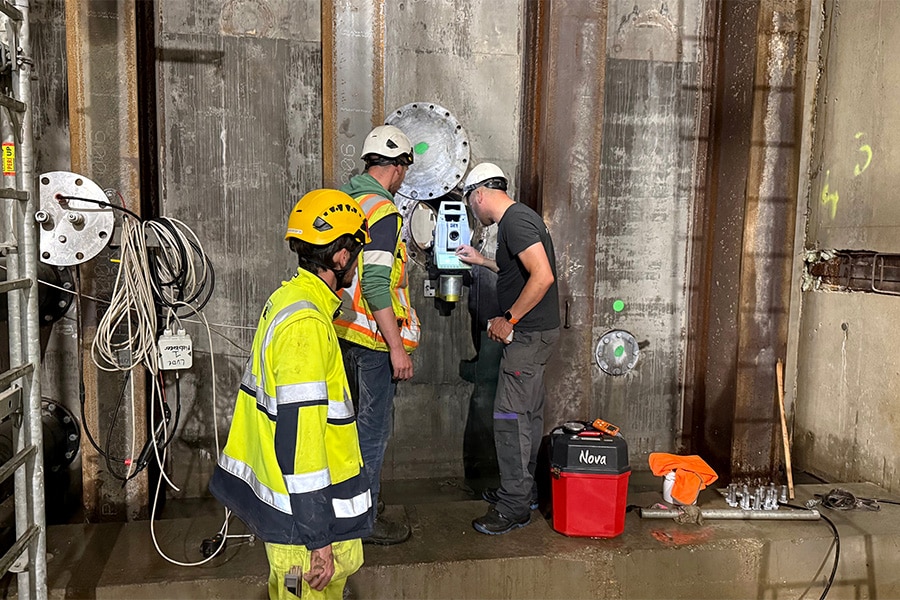
Eight immersion operations at record pace
Auke Lubach, project manager at Immontec and responsible for the immersion operations themselves, calls the scale and speed of the project unique. “We are sinking eight elements in a two-week cycle. That approach is not unique, but the high number of elements makes this project special,” he says. “That means every two weeks we have to position an element 160 meters long and 40 meters wide, 25 meters underwater. And that's on a river with strong currents, where we can only work during dead tides - a few days a month.”
The operation requires millimeter precision. “A tunnel element weighing thousands of tons hangs from winch wires 70 millimeters thick. If unexpected movements occur, the forces can be enormous,” Lubach explains. “That's why everything is simulated, tested and checked in advance. During the sinking, we work with six tugs, a tow master, a containment commander and a team ashore and on the pontoons operating the winches. Everyone has to know exactly what they are doing.”
It is also logistically challenging. “After each immersion operation, we move the heavy winches - about 50 tons each - from the shore to a pontoon, which is anchored for the next operation,” says Lubach. “This is a mini-operation in itself each time, with transportation through the city and construction on the water. In the weeks between sinkings, we also have to retest the hydraulic systems and ballast installations. It's a chain of preparation, execution and conversion.”

The technique behind sinking
For the tunnel, a sinking trench will be dredged in the Scheldt, 10 to 15 meters deep, 100 meters wide and one and a half kilometers long. Lubach: “After sinking, the element does not rest directly on the bottom, but on temporary supports. On the landward side on a so-called nose-kin bearing, on the other side on two steel pins resting on laying tiles weighing 120 tons each. Then the space under the element is filled with undercurrent sand, which we monitor continuously to prevent the element from being pushed up.”
That underflow sand is a crucial stage in the process, Bosma adds. “The flow of the sand under the element must never be too fast, or it will push the entire tunnel element back up. With our sensors, we monitor the pressure distribution and see in real time whether the sand is spreading evenly. It's like surgery: you work blind, but you can see in the data exactly what is happening.”
By means of temporary headboards, the inside of the tunnel element remains dry; and we have ballast compartments for the ballast water. After sinking, the ballast water is replaced with ballast concrete. When all eight elements are immersed, a closing joint of 1.8 meters remains between the last two. “A steel formwork and bottom plate will be put in there, after which we will pump that space dry and finish it,” says Lubach.

Monitoring and immersion: one team
The close collaboration between Bosma's monitoring team and Lubach's immersion crew is one of the success factors, according to both. “We literally sit next to each other,” Bosma says. “If Auke wants to know something about a measurement, he can do so immediately. Those short lines of communication make us flexible and reliable. There is no time to wait days for outside analysis.” Lubach adds: “Thanks to that internal expertise, we can react quickly to what is happening in the field. If something deviates, we can immediately trace it back to a sensor, a cable or a physical situation in the water.”
It also allows the company to learn a lot from its own projects. “We will soon use the data from Antwerp again to further refine our systems,” says Bosma. “For example, we now measure the winch forces continuously - something that was not standard in previous projects. That gives us insight into the dynamics of the entire system, and makes future operations safer and more predictable.”
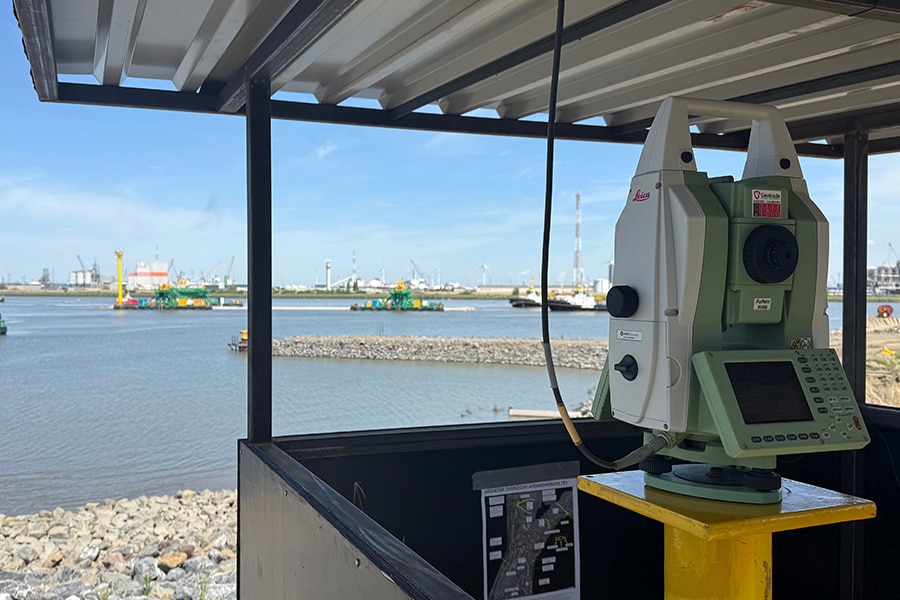
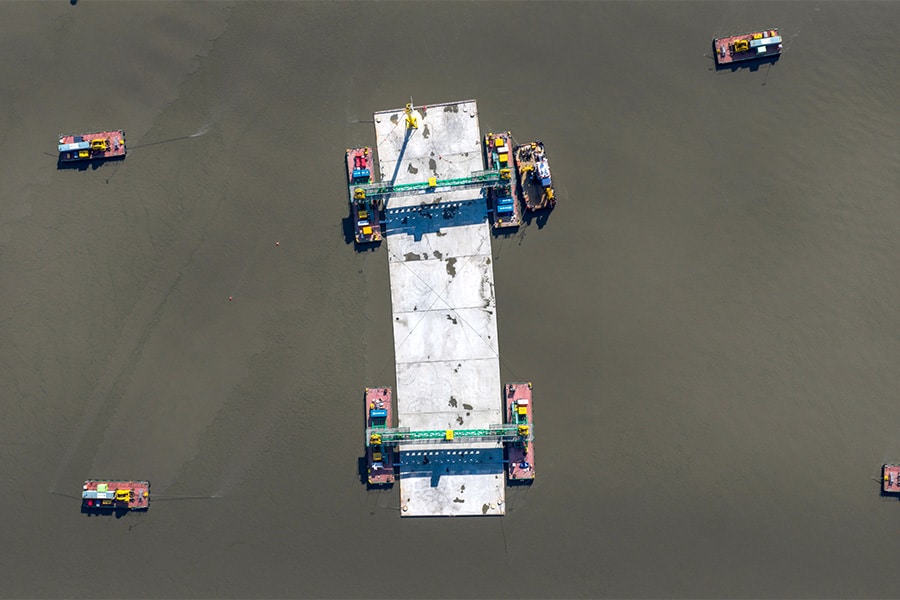
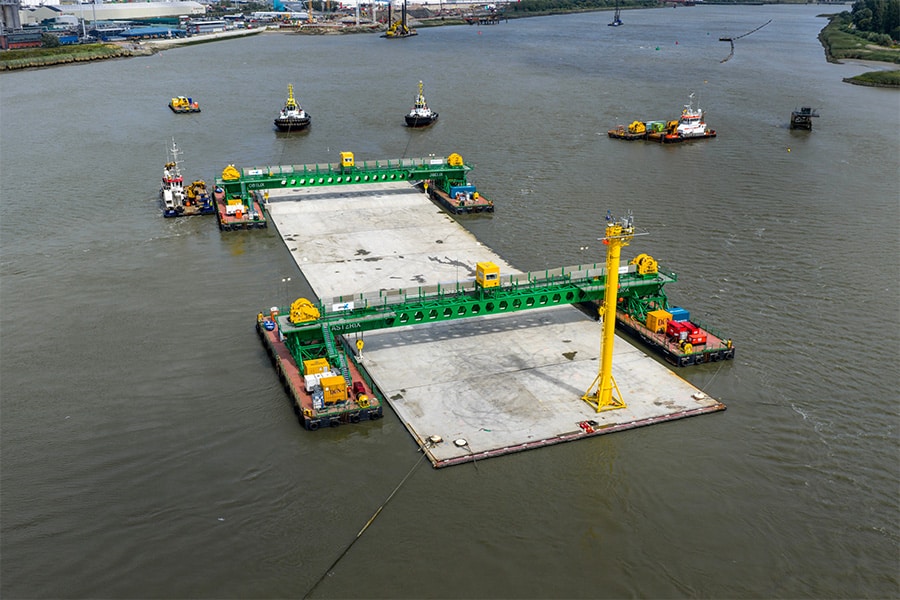
Worldwide craftsmanship
The project in Antwerp is attracting international attention. Lubach: “The market for immersion tunnels is moving again. After Antwerp, projects in Bremen and Vancouver will follow. This kind of work is specialized; there are few parties worldwide who can do it.”
Bosma nods in agreement. “It's special to work on such large-scale infrastructure. You are literally building under water, in conditions you can't see but have to fully control. Everything has to be right. Flawless. That's our mentality: failure is not an option. Monitoring and immersion are pure high-tech nowadays. And the best part is: soon Antwerp will be driving into the future over our measurement data.”
* On behalf of TM COTU and Bouwheer Lantis, Immontec responsible for carrying out the immersion operation.
Heeft u vragen over dit artikel, project of product?
Neem dan rechtstreeks contact op met IMMONTEC.
 Contact opnemen
Contact opnemen
